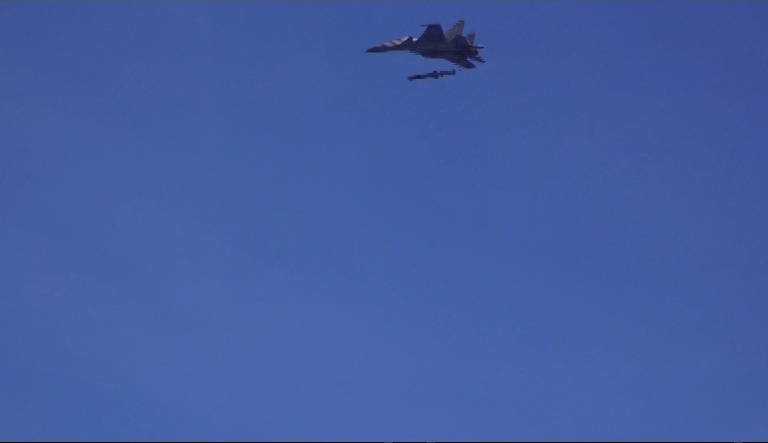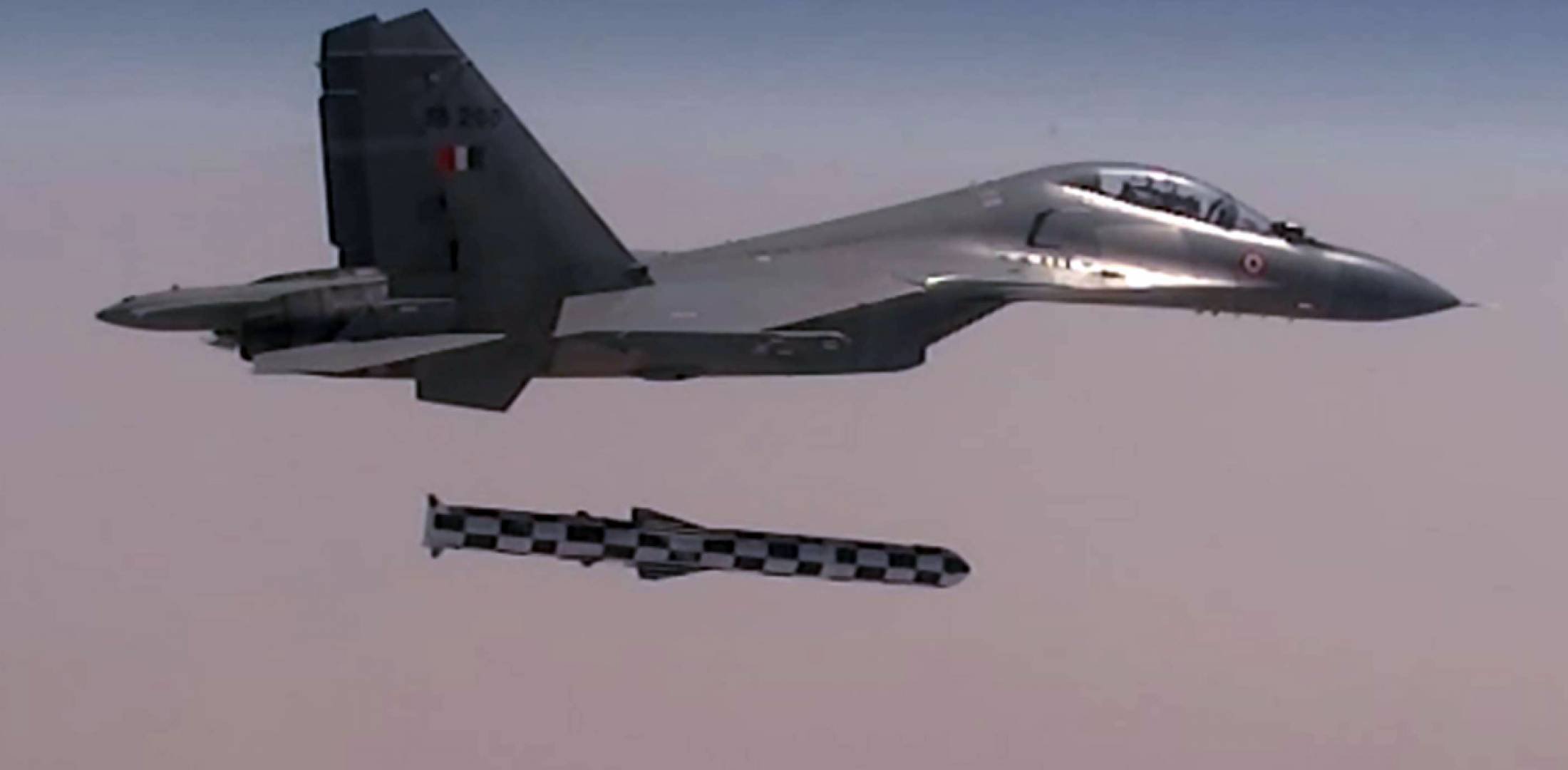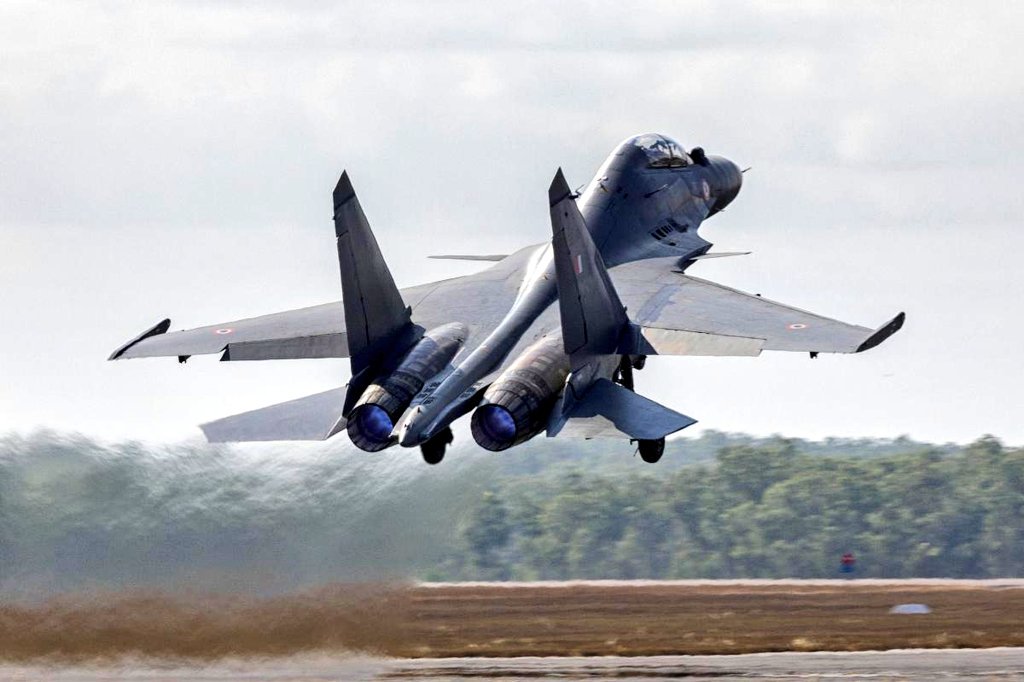India has successfully tested BrahMos supersonic cruise missile from its Sukhoi Su-30MKI fighter jet. Experts have hailed this as a major milestone as the deadly duo of BrahMos and Sukhoi can incapacitate enemy offensive capabilities, once for all.
“The missile launched from the aircraft followed the pre-planned trajectory and met all mission objectives,” according to a press release from the Ministry of Defense.
The launch, which was hailed as a “major milestone” in the development of the BrahMos, took place over the Integrated Test Range, Chandipur, off the coast of Odisha on December 8.
On the successful test-firing, India’s Defense Minister Rajnath Singh commended the Defense Research and Development Organization (DRDO), the Indian Air Force, and the other stakeholders.

G Satheesh Reddy, secretary in the Department of Defense Research and Development and chairman of DRDO, congratulated the teams involved in the flight test, saying that various laboratories at the premier agency, academic institutions, public sector undertakings, and IAF participated in the testing, production, and induction of this complex missile system.
BrahMos + Su-30 MKI – Why This Test Is Significant?
The missile has been developed by BrahMos Aerospace, a joint venture between the DRDO and Russia’s NPO Mashinostroyeniya. The missile gets its name from two rivers: India’s Brahmaputra and Russia’s Moskva.
Called the world’s fastest supersonic cruise missile, BrahMos has already been inducted into the Indian armed forces.
Air version of BrahMos supersonic cruise missile successfully test-fired from Sukhoi 30 MK-I https://t.co/ZhDVGdgGuJ pic.twitter.com/LFrhOICs0B
— DRDO (@DRDO_India) December 8, 2021
The 8.4-meter BrahMos has a range of roughly around 400 kilometers (increased from 290 kilometers following India’s entrance into the Missile Technology Control Regime) and can carry a conventional payload weighing up to 300 kilograms. It can cruise at Mach 2.8 supersonic speed owing to its high precision and destructive power.
Since the missile will be fired from a moving platform, unlike the land and navy variants, BrahMos Aerospace had to lower the weight of the air version to 2.5 tones. The missile’s land and naval versions each weigh 2.9 tones. Its design was also tweaked to make it easier to integrate into the Sukhoi Su-30MKI aircraft.

Major airframe assemblies, which are an integral part of the missile’s Ramjet engine, were developed in-house by the Indian defense industry. Non-metallic airframe sections, such as the Ramjet fuel tank and pneumatic fuel supply system, are among them.
The structural integrity and functional capability of the device were demonstrated during the test. The launch marks a significant step forward in the BrahMos development process. It paves the way for the serial production of air-version BrahMos missiles within the country.

On December 7, India also successfully test-fired the VL-SRSAM (Vertically Launched Short Range Surface to Air Missile) from the Chandipur-based ITR. The Indian Navy will use the DRDO-designed system, which can engage targets at roughly 15 kilometers.
Su-30 And BrahMos: A Lethal Combo?
The inclusion of the BrahMos Air Launched Cruise Missile (ALCM) will significantly improve the Indian Air Force’s capacity to strike heavily defended targets deep inside enemy territory.
Even if the BrahMos is launched from a Su-30 MKI within Indian territory, they now have a large strike range. For any future battles, this will entail a turning point. The first objective in active battles is to attack important enemy installations and defense assets.
Moreover, the missile is equipped with an inertial navigation system and a global positioning system and can engage ground targets from as low as 10 meters, especially for precision strikes on “terror training camps”.

The air version of BrahMos was last flight tested in July 2021. The 2.5-tonne air-launched missile has a range of 300 km and a maximum speed of 2.8 Mach.
The most important factor is that the BrahMos fired from the air will be less vulnerable to interception than land-based systems, which, despite their mobility, can be counter-attacked by opposing fighter jets if discovered.
Land-based systems must be positioned close to the border, whilst air-launched versions installed on Su-30MKIs can be deployed far from the enemy’s sight.
The IAF commissioned the 222 ‘Tiger Sharks’ squadron in Thanjavur in January 2020, consisting of modified Sukhoi Su-30 MKI fighter jets armed with the missiles. The armed forces’ offensive strike range has greatly increased massively.
Should Pakistan Worry?
Su-30 MKI and BrahMos supersonic missile are a lethal combination together, writes R Krishnan a New Zeland based defense analyst. But when one of the most supermanoeuvrable fighters jets in the world is equipped with a supersonic, super destructive cruise missile-like BrahMos, it’s bad news for enemies.
As Brahmos Corp General Manager P. Pathak had told Defense IQ in an interview – The accuracy of BrahMos makes it especially advantageous in bombing military targets in urban areas where collateral damage needs to be limited.
India was earlier tied by Missile Technology Control Regime (MTCR) restrictions that limited the range of the operational missile to less than 300km. We had already experimented with the range from 290km to 400km and then successfully test-fired the missile in March 2017. But, expanding the missile’s range from 400km to a further 800km is now possible after India’s induction into the MTCR.
Krishnan writes with the integration of BrahMos with Su-30MKI, a two-squadron attack can incapacitate Pakistan’s nerve centers including nuclear power plants, the Sargodha Central Ammunition Depot west of Lahore; ballistic missile bases in Gujranwala, Okara, Multan, Jhang and Dera Nawab Shah; Pakistani Army Corp headquarters in Rawalpindi; Pakistan’s only major harbor and its Naval HQ in Karachi; and ordinance factories that manufacture tanks and fighter warplanes.
Against China, the lethal combo may not have the same impact as Chinese targets are located deep inside the country. However, PLA military infrastructure near the LAC besides its strategic railway line and airfields can easily be destroyed. Beijing has already expressed its reservations against BrahMos missiles.
With the deadly combo of Sukhoi with the BrahMos, Pakistan can expect a lot of damage to its key infrastructure including dams, power stations, strategic bridges besides command, control & communication centers of the military.
And not to forget, the BrahMos is also nuclear-tipped. A full-throttle pre-emptive nuclear strike can guarantee their offensive capability is completely destroyed and it is never again a threat to India, Krishnan concludes.
- VIEWS PERSONAL OF DEFENSE ANALYST
- With Inputs from Ashish Dangwal
- Contact the author(s) at: etdesk@eurasiantimes.com
- Follow EurAsian Times on Google News




